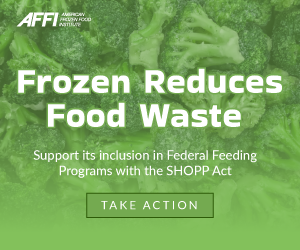Hygienic Zoning
Hygienic Zoning
The separation of where raw ingredients are handled from where cooked products are frozen and packaged is critical to Listeria monocytogenes (Lm) management and control. This section provides key principles and resources to guide and operate the location of barriers, movement of personnel and equipment/tools, access to utilities and transition and storage of ingredients/food inside the production environment.
Hygienic Zoning Recommendations
To download these free resources, please login as an AFFI member or create a non-member profile first.
DESIGNATED FACILITY VEHICLES AND MOVEMENT
Transport vehicles and wheeled items are numbered, designated by zone, cleaned and sanitized on a routine basis. Designated vehicles should be restricted to post lethality/high hygiene areas. Wood pallets should not be used in post lethality/high hygiene areas. Compliance should be monitored routinely and corrective actions taken as necessary.
RESOURCES:
FACILITY ENVIRONMENT AND UTILITIES
HVAC systems are properly designed and adjusted to maintain positive pressure and humidity levels in areas where Cooked/RTE products are exposed. External air is filtered to an appropriate level based on the risk of contamination.
RESOURCES:
FACILITY WATER SUPPLY
Water supply is routinely (minimum 6 months) tested for potability at point of use.
RESOURCES:
FOOD SAFETY CULTURE AND PERSONNEL BEHAVIOR
Employees are well trained, and behavior is re-enforced, i.e. behavior based training or surveillance cameras. Active controls are in place which make it difficult to violate a policy.
RESOURCES:
FOOTBATHS AND ENTRY AREAS
Foot and wheel hurdles should be established and maintained at entry points and between hygienic zones. Dry powder sanitizer should be used in dry areas and dry/wet transition zones. Foot bath/foamer concentrations, when used, and condition of all foot and wheel hurdles should be monitored routinely; corrective actions taken as necessary.
RESOURCES:
SANITATION TOOLS AND UTENSILS
Cleaning and production utensils should be coded and separated between zones. Separation is monitored and deviations addressed with proper corrective actions.
RESOURCES:
STORAGE AREAS IN THE FACILITY
There are separate storage rooms for packaging materials, raw/uncooked food materials, finished products, and waste materials.
RESOURCES:
TRASH MANAGEMENT AND CROSS CONTAMINATION
Trash & inedible areas have established programs & defined routes and storage areas to prevent cross-contamination with hurdles to prevent cross contamination from a lower (raw) to higher (production) care area.
RESOURCES:
ZONING AND TRAFFIC PATTERNS
Cross traffic (raw/uncooked to cooked/post lethality) is controlled with effective procedures. Traffic barriers such as walls, rails, fences, vestibules, walkways, are used as active control measures. Traffic plans and zoning maps illustrate area by level of care i.e. high hygiene, post lethality, raw.




